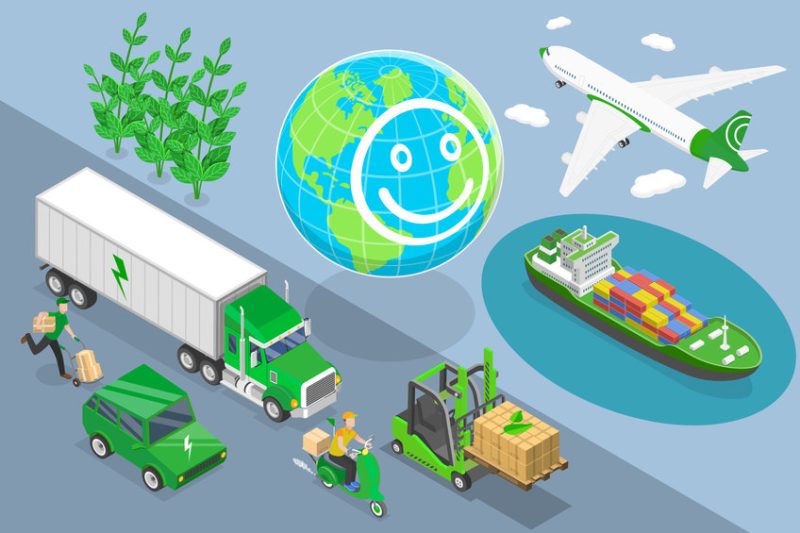|
Getting your Trinity Audio player ready...
|
Sustainable procurement and sustainability in businesses are more than just fancy buzzwords. Statistics support this argument:
- 60% more businesses engage in sustainable procurement than two years ago.
- 33% of consumers choose products and services that they believe make a positive social and environmental impact.
- 89% of sustainability managers and decision-makers state that sustainability has a direct positive financial impact on their business.
Despite all this, 25% of businesses do not know how much they spend on sustainability. Nor do they have the necessary technology and tracking mechanism.
This article aims to unravel sustainable procurement’s direct and indirect benefits on businesses and how technology can help you.
What Is Meant by Sustainable Procurement?
Sustainable procurement, also known as green procurement, takes the goal beyond cost savings. Its purpose is to align corporate social responsibility (CSR) principles to reduce the impact on the environment, economy, and society along with the price and quality.
Waste disposal and maintenance of equipment and vehicles is an important element of sustainable procurement for a circular economy. Sustainable procurement helps businesses become cost-effective and understand their supply chains better.
Why is Sustainable Procurement Crucial for Businesses?
A sustainable procurement strategy builds a positive partnership with your suppliers. You not only build trust but also monitor compliance and performance effectively.
Reduce Risk
Partnering with vendors comes with a risk. The business practices of your vendor may directly affect your reputation. For example, a transport provider whose vehicles do not meet pollution norms may directly impact your company’s reputation. It may also bring in penalties from legal governing bodies. Choosing sustainable procurement ensures that your supplier understands corporate social responsibility and sustainability.
Higher Revenue
Sustainable procurement focuses on innovation to find better products and services and source income from recycling programs. This generates a secondary source of income for the business while raising its reputation among the target clients.
Lower Cost
Reduce the costs of procurement by lowering your electricity and fuel bills. Bring more efficiency in the processes, lower environmental compliance costs, and lower the consumption of resources. You can re-invest the savings into the company for business growth and impact the bottom line.
Future-Proof the Business
Businesses can future-proof their operations against scarcity and plan, thus reducing dependence on high-risk suppliers. This reduces the risk due to price volatility and shortages. You can innovate and create new products and services and build a sustainable ecosystem.
Meet the Government Regulations
Most developing and developed countries have stringent regulations and guidelines for sustainability in businesses. The legal framework is a key barometer for the positive impact you make. To meet the regulations, you can enforce targets in your sustainable procurement policy, increase competition in business to drive sustainability, and collaborate with multiple suppliers.
The UN Global Compact defines guidelines, tools, and resources to help businesses adopt sustainable practices. It aligns your operations with ten universally accepted principles, including labor, human rights, environment, and anti-corruption.
Benefits of Sustainable Procurement for Businesses and the environment
It starts with building trust and a positive partnership with your suppliers. By monitoring the performance of your procurement program through technology, you can reduce costs and achieve more comprehensive benefits to the environment.
Business Benefits
- Improve your reputation across the business sector and amongst your customers.
- Achieve effective risk management at every touchpoint.
- Use efficient products and services and reduce costs through recycling.
- Get business support from the government (depending on your area), tax relief, and great deals on bank loans.
- Keep yourself above the competition by winning businesses based on your sustainability standards.
- Connect with investors who are interested in sustainable businesses.
Environmental and Community Benefits
- Recycling reduces the impact on the environment and local communities.
- Source fair trade products to improve working conditions. Avoid purchases from businesses that do not follow sustainability in their production.
- Reduce carbon emissions and your bills by using energy-efficient appliances and renewable energy.
- Lower the use of natural resources by choosing goods made with recycled materials and other sustainable services.
By adopting the technology for sustainable procurement, you also comply with the United Nations Sustainable Development Goals (UN SDGs). The UN SDGs define three pillars of sustainability. While they apply to every industry, let us look at them from the point of view of the procurement:
- Environmental – This pillar mandates lower greenhouse gas emissions, lower energy consumption, and responsible waste disposal and water usage. Sustainable procurement ensures that suppliers and transport companies follow the UN SDG best practices to reduce emissions and non-biodegradable waste.
- Economical – This pillar talks about the net production and operating income. Responsibly sourcing raw materials is becoming an important buying decision for the end customer. Some laws now mandate that business explicitly declare their responsible procurement pointers on the product label.
- Social – This ensures that the suppliers’ workforce provides sufficient worker rights and compensation. It shows up in the form of fair wages, medical and maternity benefits, and more.
Technology helps businesses properly assess these factors, assign metrics and KPIs, and support suppliers in their sustainability journey.
Best Practices and Policies to Follow for Sustainable Procurement
Sustainable procurement is a step-by-step approach that includes transformation in both processes and systems. Three well-known words in the sustainability world are – reduce, reuse, and recycle. But how do you implement and monitor progress effectively? You can start by adopting these best practices:
Buy in Bulk
When it comes to recyclable products, the biggest concern is the cost. Using technology and diversifying the supplier base, you can negotiate better prices for sustainable procurement and bring it to par with or even lower than the cost of non-sustainable products.
Procuring items in bulk can reduce the associated packaging and transportation costs/carbon emissions. The US Environmental Protection Agency (US EPA) says that packaging containers account for almost 45% of the landfill waste in the country. Use sustainable procurement technology to plan procurement ahead of time and place bulk orders rather than frequent purchases.
Prefer High-Quality Products
In this age of use-and-throw products, this seems like a contradiction. However, using high-quality products saves you money in the long term. The longer lifespan of the products will reduce your maintenance and disposal costs.
Review the Terms of Procurement with Your Suppliers
Defining and regularly reviewing the criteria for sustainable procurement is important for businesses. Once you have set the internal processes, review the contracts with your suppliers. Check if you can do the following:
- Buy items in bulk or reduced packaging.
- Check the source of the goods you procure. See if the manufacturer follows good labor practices and fair wages.
- Reduce the time and distance of transportation, and source the goods from suppliers nearby.
- Assess the complete inventory of goods and see if you can replace some or all of them with sustainable alternatives.
Choose Eco-Friendly Suppliers for Procurement
Establishing guidelines and policies with all the suppliers you work with is important. Once you review the suppliers, you may find that one meets your goals while the other does not. Once you have a clear view of the disparity, you can either work with the supplier to align the goals or change the supplier altogether. Some questions to ask while choosing eco-friendly suppliers:
- Does the supplier use sustainable packaging and shipping methods?
- Do they use sustainable production and disposal methods?
- Is the supplier willing to align their practices with sustainability and your goals?
- Do the suppliers hold any certifications or standard practices for sustainability?
Energy Efficiency
Be it coal, nuclear, wind, or hydro, energy production takes a toll on the environment. The only way to reduce your footprint is to change energy usage practices and choose appliances with the ENERGY STAR rating, which helps businesses save billions of dollars in energy bills.
Using Technology for Sustainable Procurement Practices in Businesses
Procurement software with a focus on sustainability ensures that you demonstrate and actively implement your commitment toward sustainable procurement. Before you implement a system, you need to take buy-in from all the stakeholders within the company.
Build the social, ethical, and environmental value within the supplier contracts using procurement pipeline management within the system.
The tender management system within your procurement software will help you create custom evaluation criteria to choose only sustainable suppliers. You can audit the suppliers and use the trail to evaluate each applicant.
Once you have a set of suppliers onboard, it is necessary to have end-to-end visibility to ensure continued sustainability. Using technology, you can manage the suppliers and see that they consciously and continuously work to minimize environmental, community, and social impact.
Use auto-generated custom reports and dashboards to ensure that all the suppliers function as per the agreed standards and communicate with them directly through the portal. You can also categorize your suppliers based on the risk exposure and perform regular checks to ensure sustainability compliance.
Conclusion
Sustainability and sustainable procurement are more than just marketing gimmicks. It is a way of doing business that safeguards the environment and communities. They endeavor to achieve net-zero emissions and waste disposal to succeed in the long term.
Businesses that understand their supply chains and onboard the best procurement software get higher brand visibility and customer loyalty and reduce product liability risk.



